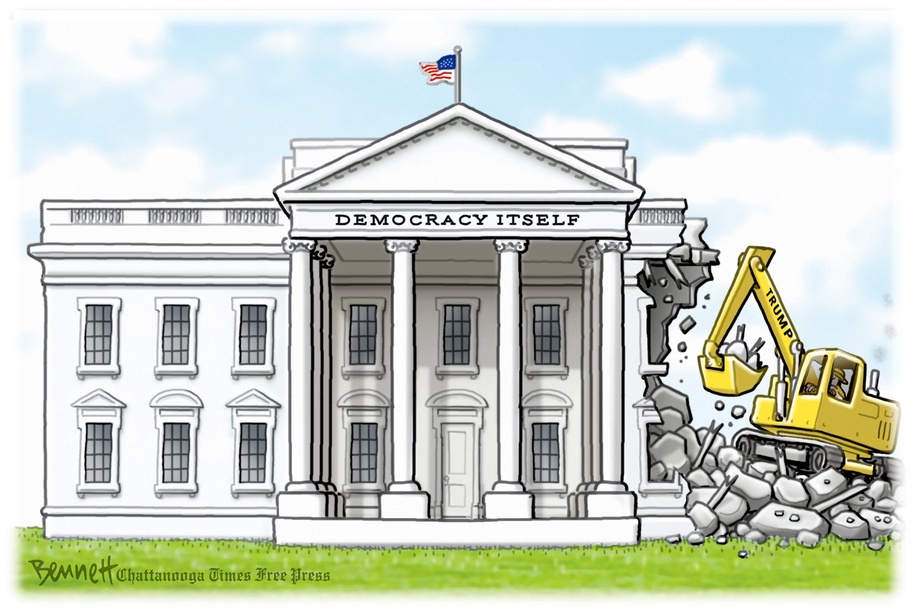Renowned cartoonist Clay Bennett has struck a chord with his latest editorial cartoon, which encapsulates the growing frustration among many Americans regarding former President Donald Trump. The cartoon, titled “Good While It Lasted,” highlights the disillusionment felt by a significant portion of the population as they reflect on Trump’s time in office.
The cartoon draws attention to the notion that Trump’s presidency, while initially celebrated by some, has led to widespread dissatisfaction. Bennett’s work, known for its sharp wit and insightful commentary, resonates particularly well in a political climate that remains deeply divided.
Public Reaction and Interpretation
Bennett’s cartoon has sparked conversations across various media platforms, with many viewers interpreting it as a powerful critique of the former president’s policies and the overall impact of his leadership. The phrase “300 million reasons to hate Trump’s ballroom” has become a focal point for discussions about the political atmosphere in the United States.
In this context, the cartoon serves not only as a piece of art but also as a reflection of public sentiment. Many Americans express concerns over Trump’s influence on political discourse and the implications of his actions during his presidency. The cartoon’s portrayal of this sentiment is both timely and relevant, given the ongoing debates surrounding Trump’s legacy.
Bennett’s work underscores the essential role of political cartoons in shaping public opinion. By using humor and satire, he effectively communicates complex emotions and opinions, allowing audiences to engage with pressing political issues in a more accessible manner.
The Role of Editorial Cartoons in Political Discourse
Editorial cartoons like Bennett’s play a crucial role in political discourse, providing commentary that can influence public perception. They often distill multifaceted issues into single, impactful images that resonate with a wide audience. In an era where political polarization has intensified, such creative expressions offer a means for citizens to process their feelings and opinions regarding current events.
Bennett’s “Good While It Lasted” is emblematic of this tradition, as it captures a pivotal moment in American politics. By reflecting the dissatisfaction felt by many, it invites further discussion on the implications of Trump’s presidency and the future of American politics.
As the nation continues to grapple with the aftermath of Trump’s tenure, cartoons like Bennett’s remind us of the power of art in political commentary. They not only entertain but also provoke thought and dialogue, encouraging individuals to reflect on their beliefs and the trajectory of their country.
In a time of widespread uncertainty and discontent, Bennett’s work stands as a testament to the enduring relevance of editorial cartoons in shaping political landscapes and public sentiment.







